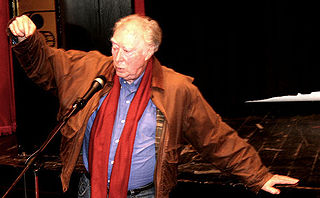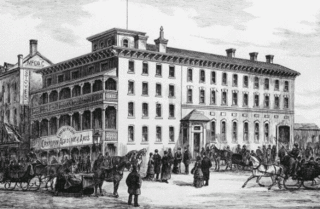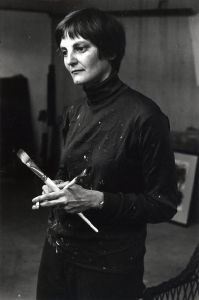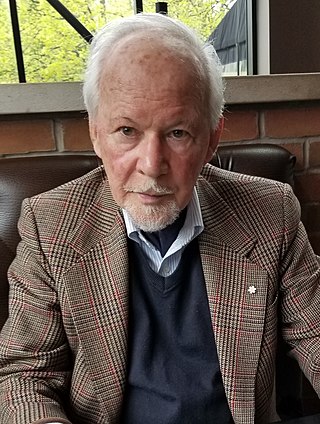Related Research Articles

Michael James Aleck Snow was a Canadian artist who worked in a range of media including film, installation, sculpture, photography, and music. His best-known films are Wavelength (1967) and La Région Centrale (1971), with the former regarded as a milestone in avant-garde cinema.

The Royal Canadian Academy of Arts (RCA) is a Canadian arts-related organization that was founded in 1880.
Roy Arden is an artist who is a member of the Vancouver School. He creates sculpture from found objects, oil paintings, graphite drawings and collage, and curates and writes on contemporary art.
Marlene Creates is a Canadian artist lives and works in Portugal Cove, Newfoundland. Born in Montreal, Quebec, Creates studied visual arts at Queen's University, then lived in Ottawa for twelve years, moving to Newfoundland in 1985.
Donigan Cumming is an American-born Canadian multimedia artist who uses photography, video, drawing, sound, and text in experimental documentary films, collages, installations, and books based in Montreal, Quebec. Since 1983, Cumming's work has contributed to Canadian and international festivals and exhibitions dealing with themes of the body, truth/fiction, taboos of representation, and social engagement.
Michael Fernandes is a Canadian experimental artist and art educator based in Halifax, Nova Scotia. His work uses familiar, even banal materials to ask the viewer to confront the boundary between daily life and art.

Brian Wood is a visual artist working in painting, drawing and printmaking and formerly with photography and film in upstate New York and New York City.

Carol Hoorn Fraser (1930–1991) was an American-born figurative artist who worked for thirty years in Nova Scotia, Canada.
Arnaud Maggs was a Canadian artist and photographer. Born in Montreal, Maggs is best known for stark portraits arranged in grid-like arrangements, which illustrate his interest in systems of identification and classification.

Evergon, also known by the names of his alter-egos Celluloso Evergoni, Egon Brut, and Eve R. Gonzales, is a Canadian artist, teacher and activist. Throughout his career, his work has explored photography and its related forms, including photo-collage, instant photography, colour photocopying, and holography.
Samuel Bejan Tata was a Chinese photographer and photojournalist of Parsi descent. Tata grew up in Shanghai where he learned the basics of photography from several mentors including Lang Jingshan and Liu Xucang. Due to political unrest, he mostly confined himself in his early career to portraiture in the tradition of pictorialism.
Susan McEachern is an American/Canadian artist. McEachern is best known for her photography, which frequently includes text. Her work follows the feminist idea of "the personal is political," as she often combines images of her own life and personal space to investigate and comment on themes of socialization, gender, sexuality, and the natural world. McEachern has also been a professor at the Nova Scotia College of Art and Design University since 1979.

Denyse Thomasos was a Trinidadian-Canadian painter known for her abstract-style wall murals that conveyed themes of slavery, confinement and the story of African and Asian Diaspora. "Hybrid Nations" (2005) is one of her most notable pieces that features Thomasos' signature use of dense thatchwork patterning and architectonic images to portray images of American superjails and traditional African weavework.
Michael Flomen is a self-taught Canadian artist who primarily creates photograms, or cameraless photographs in collaboration with nature. Flomen began taking photographs in the late 1960s, and since 1972 his work has been exhibited internationally. Snow, water, firefly light, wind, sand, sediment, shorelines and other natural phenomena make up the elements used to create his photograms.
June Clark is a Toronto-based artist working in photography, sculpture and collage. Formerly known as June Clark-Greenberg, her autobiographical works explore issues of history, memory and identity through reflections on her Harlem childhood and subsequent migration to Canada as a young adult.
Martha Langford is a Canadian art historian. She is a Distinguished University Research Professor of art history at Concordia University and the Research Chair and Director of the Gail and Stephen A. Jarislowsky Institute for Studies in Canadian Art. She was the founding director of the Canadian Museum of Contemporary Photography and served as its director and chief curator from 1985 until 1994. She is an elected Fellow of the Royal Society of Canada.
John Max was a Canadian photojournalist, photography teacher, and art photographer. He is recognized for his use of the narrative sequence, his expressive portraiture, and his intensely personal, subjective approach to photography by a number of critics, curators, artists, and photographers in Canada and abroad. It has also been the source of a number of responses and homages. Robert Frank said about him "When I think of Canadian photography, his name comes up first."

James W. Borcoman D.F.A. LL. D., also known as Jim Borcoman, was the founding curator of photography, National Gallery of Canada from 1971 to 1994. He was a pioneer in promoting photography as an art form in Canada, having established the Photographs Collection at the National Gallery in 1967 as the first of its kind in Canada, and developing its growth to over 19,000 objects, resulting in a collection known for the quality of its nineteenth and twentieth century holdings and for its exhibitions and publications. He also promoted contemporary Canadian photographers and was himself a photographer with work in the collection of the National Gallery of Canada.
Orest Semchishen is a Canadian photographer whose prints of Alberta document and evoke specific places and people in subjects such as rural communities, ethnic groups and prairie farms and collectively give a sense of Canada. The stark images reveal an economic disparity that scarcely resembles official photographs of the country. He lives in Edmonton.

Charlotte Lindgren was a Canadian sculptor-weaver, installation artist, photographer and curator. Lindgren gained worldwide fame for innovative weaving due to the response to her distinctive installation Aedicule in the 1967 International Biennial of Tapestry in Lausanne, Switzerland. Her architectural textile works — usually large — are single woven planes that transform into three-dimensional forms. They explore the interplay between positive and negative spaces, allowing for dramatic shadows and movement.
References
- Sue Carter Flynn, The Coast, "Elementary: Self-taught photographer George Steeves has been taking provocative shots—of artists, of lovers, of himself—for more than three decades", February 22, 2007 [ permanent dead link ]
- Mount St. Vincent Exhibition (includes examples)
- Two images - Shakespeare in Canadian Art Archived 2007-10-10 at the Wayback Machine
- Bedford Institute